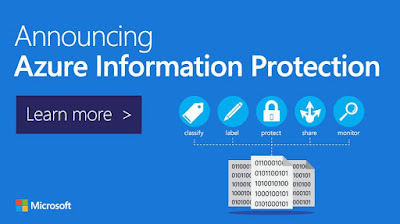Azure Application Gateway and its features
Azure Application Gateway is a tool, used to manage traffic for our web applications. Generally, the traditional load balancers work at the transport layer and send traffic depending on the port, and source IP address to the destination IP address and port.
Using the Application Gateway, which is a web traffic load balancer we can make routing decisions, depending on the extra features of an HTTP request, like the URI path or host headers.
To get depth knowledge On Azure You can enroll for free live demo Azure Online Training
For instance, you can route traffic depending on the entering URL. Suppose if images are in the entering URL, then we can route images traffic, to a certain group of servers arranged for images. If the URL contains a video, then traffic is directed to another set that is designed for videos
This method of routing is called as Application Layer (OSI layer 7) load balancing.
Below are the features of Azure Application Gateway,
Features of Azure Application Gateway:
Secure Sockets Layer(SSL/TLS) Termination:
SSL/TLS termination at the gateway is supported, by the Application gateway. By this, traffic goes to the backend servers without any encryption. Which removes webservers, from costly encryption and decryption expenses.
But, interaction with the servers without encryption is not an acceptable choice due to confirmation and security specifications, or maybe it only accepts a secure connection. For this kind of application, End to end SSL/TLS encryption is supported by application gateway.
Web Application Firewall (WAF):
A Centralized safety from common exploits and threats, for our web applications, can be provided by WAF. Common exploits include cross-site scripting, SQL injection attacks, etc.
In Application code, Protection from these attacks is difficult and it needs more careful repairing, managing and observing different layers of the application.
Take your career to new heights of success with a Microsoft Azure Training
A centralized WAF makes security maintenance, more simple and assures application administrators, from intrusions or threats.
Ingress Controller:
Azure Kubernetes Service group can be accessed, using Application Gateway by AGIC-Application Gateway Ingress Controller.
Ingress controller acts as a pod, in the AKS group and takes Kubernetes Ingress Resources and transforms, into an Application Gateway application that makes the gateway, to load-balance traffic to the Kubernetes pods.
URL-based routing:
URL path based Routing makes to direct traffic to back-end server pools depending on the URL paths, of the requests.
Multiple site hosting:
Arrangement of more than one website, similar application gateway, is allowed by Multiple site hosting. By this, the topology of our apps can be designed effectively. We can add 30 for WAF, or 50 websites to a single application gateway.
Redirection:
Generally, many web applications, redirect HTTP to HTTPS automatically. This helps every interaction of an application, and its clients are made in an encrypted manner.
Application Gateway redirection support has the ability to redirect, the HTTP requests to HTTPS.
Session affinity:
If you want to keep a user session on the same server, then this cookie-based session affinity is very much useful. With the help of gateway-managed cookies, the application gateway can route continuous traffic from a user session, for processing to the same server.
This is crucial if the session state is stored, locally on the server for a user session.
Websocket and HTTP/2:
Websocket and HTTP/2 protocols are supported, by Application Gateway. They allow full-duplex communication, between a user and a server for a long-running TCP connection. This makes communication between the client and the webserver, interactive and bidirectional without the polling
Custom error pages:
In place of showing default error pages, Application Gateway enables us to make custom error pages. By which we can utilize, our own design and identification.
Rewrite HTTP headers:
HTTP headers enable the server and user to pass extra data, with the response or request. It also helps to add security-related header fields, remove response header fields which can show sensitive data.
Autoscaling:
Autoscaling eliminates the need to select an application size, or event size while provisioning.
Static VIP:
The Static VIP related to application gateway is not changed throughout the Lifetime of Application Gateway.
Draining of Connection:
This feature helps us to effortlessly remove the backend pool members while planned service upgrades.
I have explained about Azure Application Gateway and its features in this article. Follow my articles to get more updates on Azure training in Hyderabad.

Comments
Post a Comment